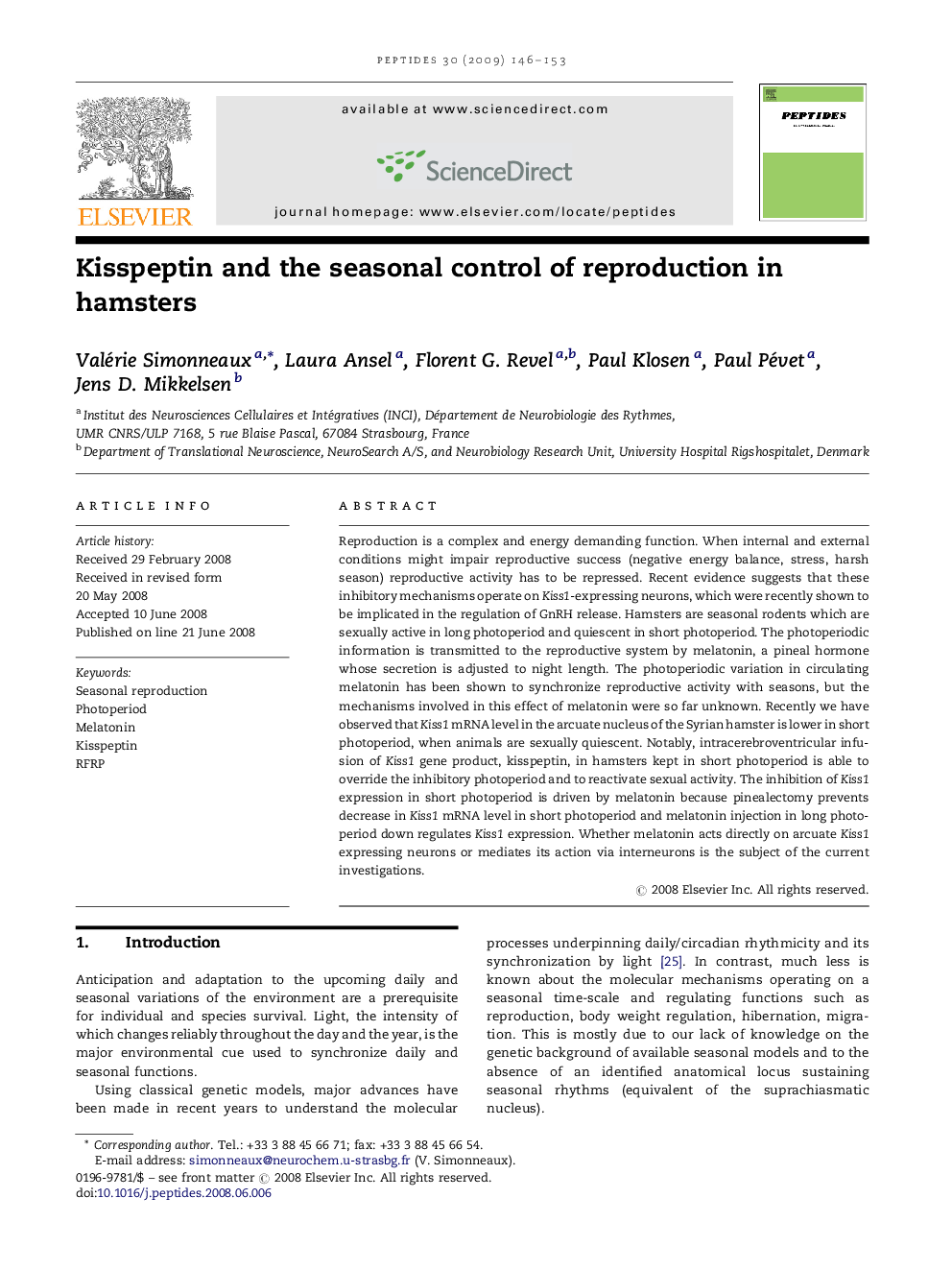| Article ID | Journal | Published Year | Pages | File Type |
|---|---|---|---|---|
| 2007933 | Peptides | 2009 | 8 Pages |
Reproduction is a complex and energy demanding function. When internal and external conditions might impair reproductive success (negative energy balance, stress, harsh season) reproductive activity has to be repressed. Recent evidence suggests that these inhibitory mechanisms operate on Kiss1-expressing neurons, which were recently shown to be implicated in the regulation of GnRH release. Hamsters are seasonal rodents which are sexually active in long photoperiod and quiescent in short photoperiod. The photoperiodic information is transmitted to the reproductive system by melatonin, a pineal hormone whose secretion is adjusted to night length. The photoperiodic variation in circulating melatonin has been shown to synchronize reproductive activity with seasons, but the mechanisms involved in this effect of melatonin were so far unknown. Recently we have observed that Kiss1 mRNA level in the arcuate nucleus of the Syrian hamster is lower in short photoperiod, when animals are sexually quiescent. Notably, intracerebroventricular infusion of Kiss1 gene product, kisspeptin, in hamsters kept in short photoperiod is able to override the inhibitory photoperiod and to reactivate sexual activity. The inhibition of Kiss1 expression in short photoperiod is driven by melatonin because pinealectomy prevents decrease in Kiss1 mRNA level in short photoperiod and melatonin injection in long photoperiod down regulates Kiss1 expression. Whether melatonin acts directly on arcuate Kiss1 expressing neurons or mediates its action via interneurons is the subject of the current investigations.
